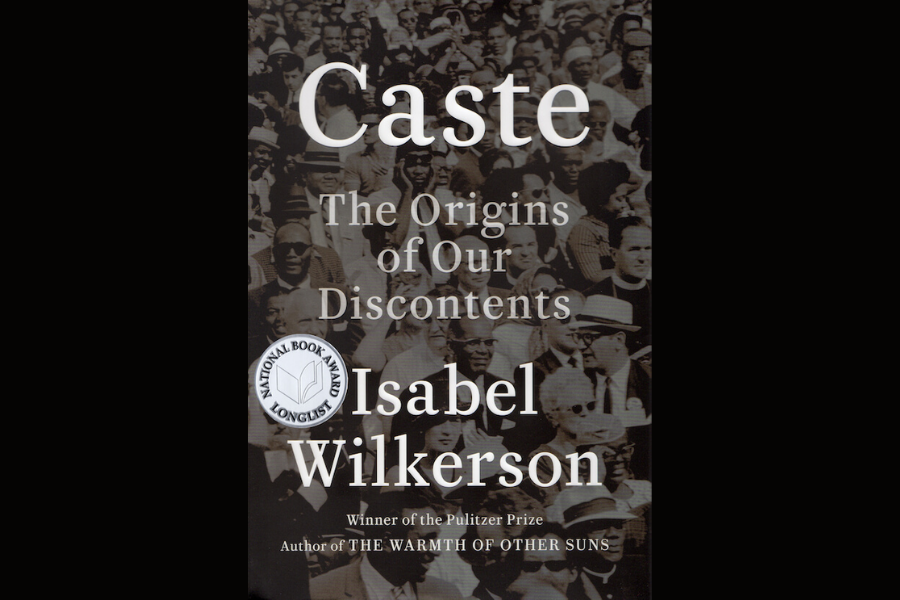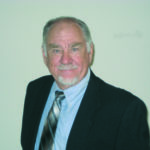
America’s criminal justice system has been criticized for many things, among them its apparent racial bias. Minority individuals, particularly African Americans, have been incarcerated disproportionately to their percentage in the general population. Race sensitivity training in correctional settings has become more common, and in the umbrella of the Black Lives Matter movement, racism has once again become a topic of public interest, moreso in light of Robin DiAngelo’s popular book White Fragility (DiAngelo, 2018), in which she discusses why it is so difficult for white people to talk about racism; a social structure that emerges “when a racial group’s collective prejudice is backed by the power of legal authority and institutional control” (p. 20). This article highlights another book critical to understanding the impact of racial injustice in the context of the criminal justice system, CASTE: The Origins of Our Discontents, by Isabel Wilkerson, which explores America’s caste system.
“Color is a fact. Race is a social construct.” Wilkerson, 2020, p. 67.
After reading both DiAngelo’s and Wilkerson’s books, I was of the opinion that no conversation about race or racism in America was sufficiently informed without understanding the influence of a caste system in the U.S., and how that, in part, explains the emergence of racism in America and America’s racially biased criminal justice system.
Overview
Wilkerson, a Pulitzer Prize winning author, teacher and lecturer, wrote her book to discuss the social influences of a caste system. Although she explores these influences in a number of other countries (e.g., Nazi Germany, India), she devotes significant attention to the American caste system, its beneficiaries—European Americans—and its disadvantaged—African Americans, “against whom the caste system has directed its full powers of dehumanization” (p. 28).
“In search for prototypes for miscegenation law, the Nazis’overwhelming interest was in the ‘classic example:’ the United States of America.” Wilkerson, p. 82.
Wilkerson’s book is 388 pages of text, with an additional 88 pages of acknowledgments, notes, and index. Published by Random House, it was published in 2020. It has seven Parts:
- Toxins in the permafrost and heat rising all around;
- The Arbitrary construction of human divisions;
- The Eight pillars of caste;
- The Tentacles of caste;
- The Consequences of caste;
- Backlash; and
- Awakening.
Each Part has numerous chapters, with a total of thirty-one chapters, followed by an Epilogue. Many of the chapters have very thought-provoking titles, such as “The American untouchable,” “The Nazis and the acceleration of caste,” “Inherent superiority versus inherent inferiority,” “The Eurphoria of hate,” “Cortisol, telomeres, and the lethality of caste,” and her Epilogue, “A world without caste.”
A short review of each chapter is not necessary to understand the intention of each Part. Consequently, a few citations will suffice to provide the reader with some thought-provoking ideas that are the essence of her work.
Key Chapters and Concepts
Wilkerson begins by explaining that the word caste comes not from India, as some might suspect, but from the Portuguese word casta, a Renaissance-era word for “race” or “breed.” She cites Ashley Montagu who wrote that “The idea of race was, in fact, the deliberate creation of an exploiting class seeking to maintain and defend its privileges against what was profitably regarded as an inferior caste” (p. 66).
“No one was white before he/she came to America” James Baldwin, in Wilkerson, p. 49.
In Chapter Two, Wilkerson writes that “Caste (in America) is the infrastructure of our divisions…the architecture of human hierarchy, the subconscious code of instructions for maintaining …a four-hundred-year-old social order…that sets the presumed supremacy of one group against the presumed inferiority of other groups on the basis of ancestry…”. And “The hierarchy of caste is not about feelings or morality. It is about power—which groups have and which do not” (p. 17). She further notes that although caste and race can coexist in the same culture and serve to reinforce each other, “Race, in the United States, is the visible agent of the unseen force of caste” and “Caste is the powerful infrastructure that holds each group in its place” (p. 19).
In Part Three, The Eight pillars of caste, she notes that “a caste system relies on dehumanization to lock the marginalized outside of the norms of humanity so that any action against them is seen as reasonable” (p. 142). She concluded that after WW I, the United States blamed African-Americans for many of its social ills, and that African Americans were subjected to a program of purposeful dehumanization” (p. 143), including being subjected to gruesome medical experimentation at the hands of dominant-caste physicians” (p. 147), a process that contributes to many African American’s being reluctant to receive the Covid 19 vaccines today.
In her Part Four section on “Unconscious bias,” Wilkerson wrote that ‘by the end of the twentieth century, researchers found that 80 percent of white Americans held unconscious bias against black Americans, “bias so automatic that it kicks in before a person can process it” (p. 186). As Wilkerson noted, these autonomic and unconscious responses have contributed to disparities in hiring, in housing, in education, and in medical treatment for the lowest-caste people (p. 187), and, one might add, who gets incarcerated and who does not for the same or similar crimes.
“… there are no black people in Africa…They don’t become Black until they go to America or the U.K.” Wilkerson, 2020, p. 53.
In Chapter Fourteen, “The intrusion of caste in everyday life,” Wilkerson, noting that the United States has a centuries-old history of people in the upper caste controlling and overriding the rightful roles of lower-caste parents and their children (p. 211), the policing of roles expected of people based on what they look like and the monitoring of boundaries “to keep the hierarchy in place” (p. 217). She also pointed out that “…most Americans know by now that calling the police on a black person can carry life-and-death consequences (p. 218). As an ending comment, she wrote “We prejudge complicated breathing beings in ways we are told never to judge inanimate objects” (p. 223).
In Chapter Twenty-Nine, Wilkerson discusses the price we pay for a caste system, noting that “few industrialized economies provide as stingy aid to the poor as the United States,” “there are more public mass shootings in America than in any other country,” not surprising since “Americans own nearly half of the guns in the world owned by civilians” (p. 355). She noted America’s world-record incarceration rates, that American women are more likely to die during pregnancy and childbirth than women in other wealthy nations, that life expectancy in the United States is the lowest among the eleven highest-income countries, that infant mortality in the United States is highest among the richest nations, etc. She also noted that in the CoVid pandemic, African-Americans and Latino-Americans began dying at higher rates.
And so it goes….
In her Epilogue, Wilkerson concludes that, “In a world without caste, being male or female, light or dark, immigrant or native-born, would have no bearing on what anyone was perceived as being capable of… In a world without caste, we would all be invested in the well-being of others in our species if only for our own survival” (p. 388). However, as she points out, “Caste is a disease” to which none of us is immune.” Unfortunately, “those in the best position to fix caste inequity, have often been least likely to want to” (p. 380).
Conclusion
Wilkerson’s book is dense with relevant quotes, eye-opening observations, and clear insights about America’s caste system that could meaningfully contribute to our sense of and discussions about race and racism, and how caste differentially influences our everyday life, whether white or black, brown, red, or yellow, often outside our conscious awareness. As it is, it is not from unending discussions of race or racism that will ultimately lead to a resolution of the social disadvantages of both, but an understanding and dismantling of America’s 400-year old caste structure that keeps each in place, for, as Wilkerson suggests, “Race, in the United States, is the visible agent of the unseen force of caste” (p. 19).
In conclusion, after reading Wilkerson’s book, it is this reviewer’s opinion that although a world without racism would be nice, “A world without caste would set everyone free” (p. 388).
*Specific references available upon request.

About the Author
Richard Althouse, Ph.D. is Secretary of the Executive Board of IACFP. He has had 37 years of experience as a clinical/correctional/forensic psychologist in both staff and supervisory positions in the Wisconsin Department of Corrections or the Wisconsin Department of Health and Social Services. Since retirement, Dr. Althouse has remained active in matters related to the criminal justice system and provides expert testimony in litigation involving inmate suicides.

